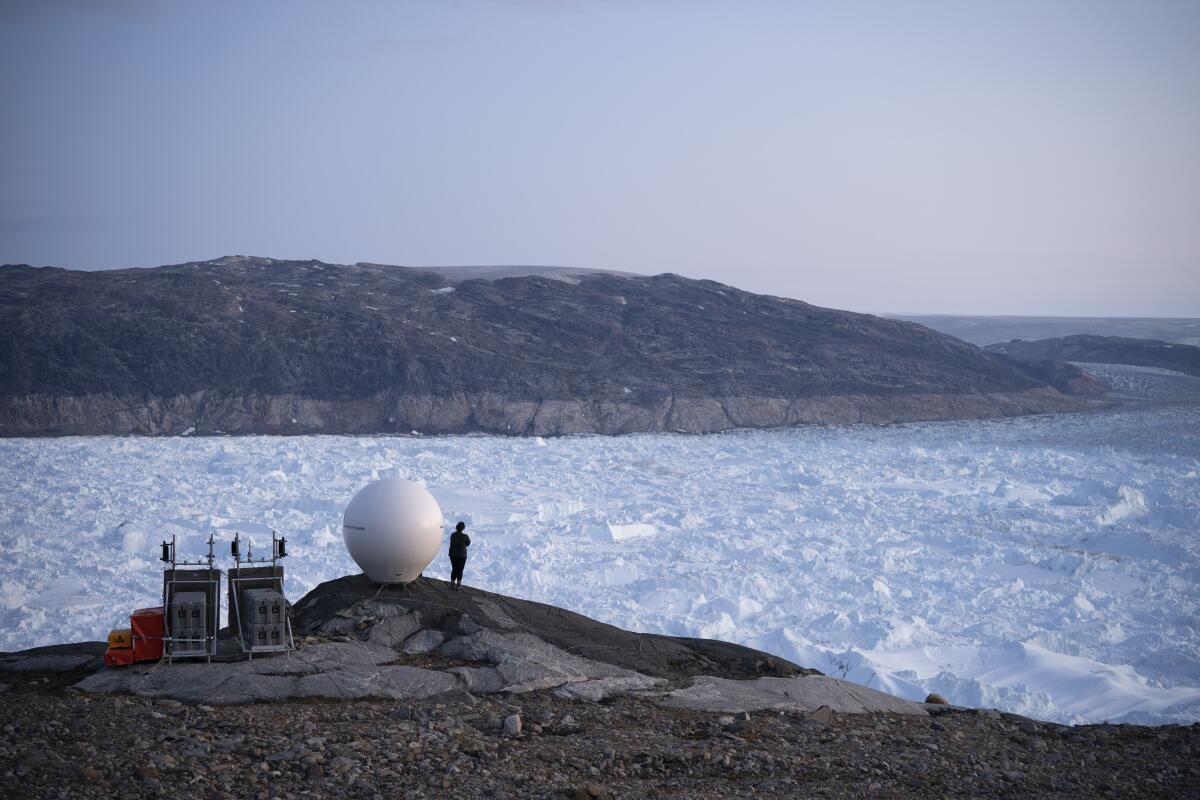Massive ice melt in Greenland last year shattered previous records, study says

- Share via
Greenland lost a record amount of ice during an extra warm 2019, with the melt massive enough to cover California in more than four feet of water, a new study said.
After two years when summer ice melt had been minimal, last summer shattered all records with 586 billion tons of ice melting, according to satellite measurements reported in a study published Thursday. That’s more than 140 trillion gallons of water.
The loss is far more than the yearly average of 259 billion tons of ice since 2003, and it easily surpasses the previous record of 511 billion tons in 2012, researchers wrote in Nature Communications Earth & Environment.
“Not only is the Greenland ice sheet melting, but it’s melting at a faster and faster pace,” said study lead author Ingo Sasgen, a geoscientist at the Alfred Wegener Institute in Germany.
The study also showed that there were many years in the 20th century when Greenland actually gained ice.
Toward a more sustainable California
Get Boiling Point, our newsletter exploring climate change, energy and the environment, and become part of the conversation — and the solution.
You may occasionally receive promotional content from the Los Angeles Times.
Last year’s Greenland melt added 0.06 inches to global sea level rise. That sounds like a tiny amount, but “in our world it’s huge — that’s astounding,” said study co-author Alex Gardner, an ice scientist at NASA’s Jet Propulsion Laboratory in La Cañada Flintridge. Add in more water from melting in other ice sheets and glaciers, along with an ocean that expands as it warms, and that translates into slowly rising sea levels, coastal flooding and other problems, he said.
While general ice-melt records in Greenland go back to 1948, scientists began making more precise assessments in 2003 courtesy of NASA satellites that measure the gravity of the ice sheets. It’s the equivalent of putting the ice on a scale and weighing it as water flows off, Gardner said.
In 2017 and 2018, cooler Arctic air flowed from the open ocean into Greenland, which made the summers milder and the melt less severe, he said.
In 1965, leading scientists of the day produced a report for President Lyndon B.
This year, Greenland’s summer melt has also been closer to normal for recent times, said Ruth Mottram, an ice scientist at the Danish Meteorological Institute who was not involved in the new study.
Mottram and several other independent scientists said that Sasgen’s calculations made sense. In her own study this month in the International Journal of Climatology, she reported similar results and also calculated that since 1991, Greenland coastal regions have warmed by an average of about 3 degrees Fahrenheit (or 1.7 degrees Celsius) in the summer.
“The fact that 2019 set an all-time record is very concerning,” said New York University ice scientist David Holland, who wasn’t part of either study.
More to Read
Sign up for Essential California
The most important California stories and recommendations in your inbox every morning.
You may occasionally receive promotional content from the Los Angeles Times.










